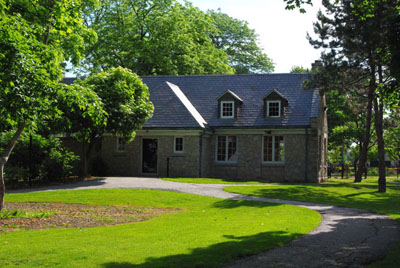Fort Malden National Historic Site of Canada
Amherstburg, Ontario

General view
© Parks Canada Agency / Agence Parcs Canada, 2009
Address :
100 Laird Avenue South, Amherstburg, Ontario
Recognition Statute:
Historic Sites and Monuments Act (R.S.C., 1985, c. H-4)
Designation Date:
1921-05-21
Dates:
-
1796 to 1799
(Construction)
-
1796 to 1813
(Significant)
-
1812 to 1812
(Significant)
-
1813 to 1815
(Significant)
-
1837 to 1838
(Significant)
-
1820 to 1820
(Other addition)
Event, Person, Organization:
-
War of 1812
(Event)
-
Royal Canadian Volunteers
(Organization)
-
The Black Militia
(Organization)
Other Name(s):
-
Fort Malden
(Designation Name)
-
Fort Amherstburg
(Other Name)
Research Report Number:
1962-37; 1963-15; 1965-04
DFRP Number:
10700 00
Plaque(s)
Existing plaque: 100 Laird Avenue South, Amherstburg, Ontario
This post was begun by the Royal Canadian Volunteers in 1796 to replace Detroit and to maintain British influence among the western Indians. As the principal defence of the Detroit frontier in 1812, it was here that Isaac Brock gathered his forces for the attack on Detroit. The next year, with supply lines cut and control of Lake Erie lost to the Americans, the British could not hold the fort, which they evacuated and burned. Partially rebuilt by the invading Americans, it was returned on 1 July 1815 to the British, who maintained a frontier garrison here until 1851.
*Note: This designation has been identified for review. A review can be triggered for one of the following reasons - outdated language or terminology, absence of a significant layer of history, factual errors, controversial beliefs and behaviour, or significant new knowledge.
Description of Historic Place
The Fort Malden National Historic Site of Canada is an extensive, park-like area defined by surviving earthworks, a brick barracks building and a classically inspired structure of a domestic nature, situated on the banks of the Detroit River opposite Bois Blanc Island in Amherstburg, Ontario.
Heritage Value
Fort Malden was designated a national historic site of Canada for its role : as the principal military station for the defence of the western frontier for the period 1796-1813; in the War of 1812; in the defence of the western frontier during the border raids of 1837-38.
The heritage value of Fort Malden National Historic Site of Canada lies in the association of surviving cultural resources with the military role of the fort in the 18th and 19th centuries. The fort consisted of a deep protective ditch lined with pickets and a raised earthen parapet with bastions and mounted artillery which helped to define its interior parade square. The fort's only surviving building is the Men's Brick Barracks built in 1820. Fort Malden was established in 1796, and built as Fort Amherstburg by the Second Battalion Royal Canadian Volunteers in 1797-1799. It was strengthened in 1812, but evacuated and burned by the British in September 1813. The Americans partially rebuilt the fort in 1815. After the War of 1812, Fort Malden returned to the British and in 1837-38 was reconfigured in order to serve as a border post.
Sources: HSMBC Minutes, 1936, 1977; Commemorative Integrity Statement.
Character-Defining Elements
Key features contributing to the heritage value of this site include:
the cultural landscape as a remnant defence work with its siting, the form and footprint of its earthworks, parade square and other man-made landscape features and surviving building; siting on a steep bank above the Detroit River.
Men's Brick Barracks its massing as a long low single-storey rectangle with a moderately pitched hipped roof punctuated by large brick chimneys and the duplication of these shapes at a more modest scale in the 1840s brick addition to the building; the dominant porch and symmetrical definition of its main facade with a central door, flanking doors with sidelights, and the balanced arrangement of doors and windows on other facades; defensive loopholes on the south and east walls of the 1840s addition; original exterior materials and their craftsmanship (rubblestone foundation and brick walls); surviving evidence of original interior layout, materials and finishes including brick partition walls and centrally placed chimneys, roof framing, original plaster and trim; siting at perimeter of the parade square.
Archaeological remains vestiges of buildings, defensive works and activities.
Landscape features footprint and form of the earthworks and parade square with their view of associated ditch, bastions, and glacis (on neighbouring property); the scale and location of these works in relation to each other and to the Brick Barracks; evidence of historic entrances to the fort from the town and from the river to the fort; viewplanes to and from Fort Malden, to the narrow channel of the Detroit River and Bois Blanc Island and the view to and from the southwest bastion down Dalhousie St. to the town of Amherstburg and the former naval yard.